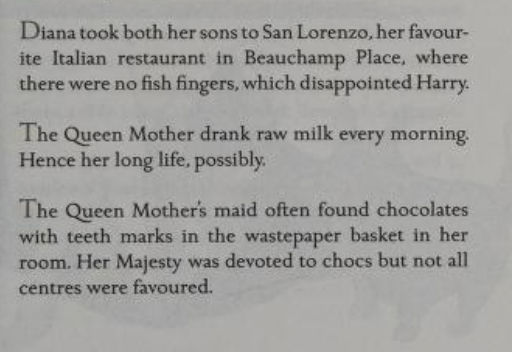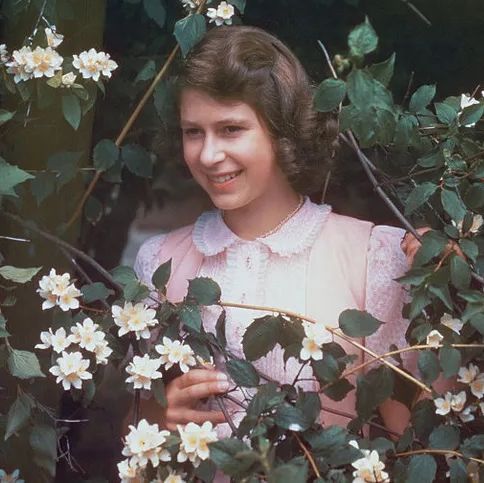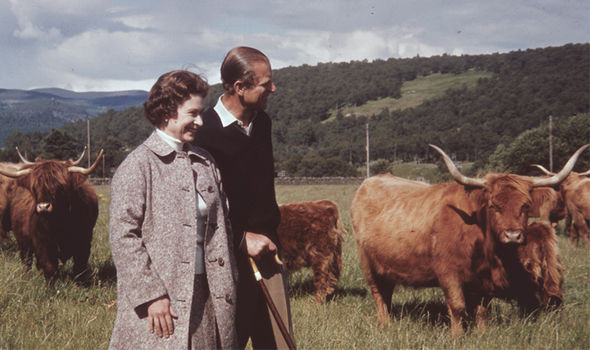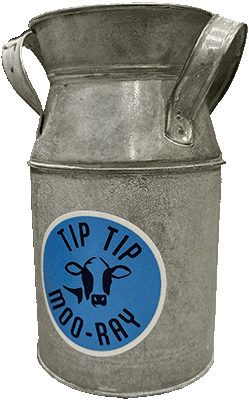Elizabeth II chose raw milk as her milk of choice, according to several reports. Even to the extent that she recruited farmer Adrian Tomlinson to bottle and deliver raw milk for her grandsons, Harry and William, while they were students at Eton College.
Her preference likely began with her mother, who appears to have been an early defender of raw milk while pasteurization first became mandated and industrialized.
Here are some sources I’ve been able to find.
Royal Anecdotes
What a thing to say to the Queen : a collection of royal anecdotes from the House of Windsor by Thomas Blaikie, page 80

The Globe and Mail
Raw-milk fans are getting a raw deal from the The Globe and Mail, archive
Queen Elizabeth drinks her milk raw. She reportedly thinks so highly of unpasteurized milk that, when her grandsons Princes William and Harry were students at Eton, she instructed herdsman Adrian Tomlinson to bottle up raw milk from her Windsor herd and deliver it to them at school.
Express
The Queen Mother: The controversial drink that led royal to age 101 from Express.co.uk
Within the book Blaikie wrote: “The Queen Mother drank raw milk every morning. Hence her long life, possibly.”
In addition to this, an article published by MailOnline revealed more details about the Queen Mother and her daily tipple. It reported: “The late Queen Mother was said to be a huge fan, insisting on raw milk from the Ayrshire cows of the royal herd at Windsor.”
Daily Mail
The conspiracy to stop us drinking real milk: Unpasteurised milk is tastier AND healthier, say devotees. So why has it been banned from our shops for so long? from DailyMail.com
At a 1923 conference the physician to the Royal Family, Lord Dawson of Penn, warned that ‘pasteurisation could never make bad milk into good milk’.
The late Queen Mother is believed to have insisted on raw milk from the Ayrshire cows of the royal herd at Windsor.
Opponents of pasteurisation argued that a better solution to the disease threat would be to clean up production. This could be achieved by improved hygiene standards and better practices on the farm.
Ontario Farmer article
This article was posted to a Yahoo group in 2006 and archived here.
Hi everyone – had this article forwarded to me today by the woman who runs a local co-op. 2nd to last paragraph is the main point, if you want to skip the details –
Dairying on the historic grounds of Britain’s Windsor Castle
Adrian Tomlinson rubs shoulders with royalty in his job as the Queen’s Ayrshire herdsman
BY IAN GUMMING
Ontario Farmer staff
Adrian Tomlinson has been herdsman for the Queen of England’s Ayrshire herd at Windsor Castle for 17 years. The 43-year-old dairy farmer’s son from Cheshire had answered an advertisement back then and during the interview “hit it off’ with the farm manager who told him right then and there the job was his.
It’s meant over the past decade and a half that the Queen has stuck her head through his back door, or rapped on the window, when she’s seen an unattended cow calving in the pasture, or on the bedding pack.
“All cattle are registered in her name, with the prefix of Windsor,” said Tomlinson. All herd events, including placings at shows, are filed in regular reports to her.
It’s meant farming within a 15,000 acre estate guarded by the nation’s army – 2,500 acres being intensely farmed for a Jersey and Ayrshire herd, along with a beef herd, sheep flock, valuable horses and cash crop.
It’s meant working with great cattle – where money is not an object – in the midst of one of the most hallowed, historic spots in Britain.
All of this isn’t lost on Tomlinson as he drives around the estate enthusiastically showing the Jersey farm that Queen Victoria built in the 1860’s, the Frogmore House, where they found 600 year old murals on the walls after they had taken off the plaster, or the mausoleum where so many of the nation’s royalty is buried; including Queen Victoria and her husb and Prince Albert.
It’s also meant working with people who take pride in their professions and in their nation’s history.
Just across the yard from where Tomlinson and his family live is the smaller stone house where the last Ayrshire herdsman stays. He’s 92 years of age and a war veteran. As the story goes, he weighed 80 pounds, despite st and ing six feet tall, when freed as a war prisoner and had been nursed back to health there at a special facility on the Windsor Castle grounds.
He started working with the cattle and then stayed. His employers are looking after him for life as thanks for his service.
Other houses on the Castle grounds are for the head groom, farm manager, the furniture polisher and restorer, the Jersey herdsman, coachman, tractor drivers and gardeners, with the list being a lot larger. Tomlinson’s wife, giving birth to their first child five weeks ago, is Windsor Castle secretary.
The Jersey herd, “is the oldest existing one in the world,” said Tomlinson. Queen Victoria had been given six Jerseys as presents back in the 1840s and , with accurate pedigrees kept since then, a lot of the herd traces back to them, he said.
There had been Ayrshires up at Balmoral Castle for the same amount of time, but they weren’t moved down to Windsor until the reign of the current Queen began, said Tomlinson.
Both herds, each with 180 milking cows, have a lot of Canadian genetics, with about a 1,000 kg a cow difference between the herds in production.
With the higher Jersey fat, which herd is the most profitable? “The Ayrshires,” Tomlinson answers with a wide grin.
Both herds are grazed, fed haylage and corn silage in a feed bunk and the pelleted concentrate in the milking parlour. They are housed on a bedding pack, which enhances cow comfort, but results in a higher sec count than with the free stalls they had before, said Tomlinson.
The cattle housing facilities are over 20 years old and Tomlinson notes that new facilities “are under discussion.” That would certainly mean a move to TMR feeding, he says.
One of the most unique farm buildings, that will certainly re-main unaltered, is the dairy built by Queen Victoria in 1861. With marble counter tops imported from Russia cooled by water running through them, milk was poured in the individual pans and then the cream was separated. Beautiful carvings adorn the walls.
Although the building hasn’t been used for 90 years everything has been left as is and is polished every week, said Tomlinson.
What hasn’t changed over the centuries is that these herds put raw milk on the Royal family’s and other consumers’ tables, said Tomlinson. The Queen drinks raw milk from her Jersey herd and when Princes William and Harry were being educated at nearby Eton, “I would bottle up some milk from the Ayrshire herd every day and run it over to them.”
A small ice cream st and in the tourist section of the grounds advertised the product made from raw milk at Windsor, along with humane cattle h and ling, and the lineup was long. Organic agriculture isn’t practiced at Windsor but rather at Prince Charles Ayrshire heard in Gloucester , said Tomlinson.
From the Ontario Farmer – Tuesday, Sept. 5, 2006 – Pages 22, 23






